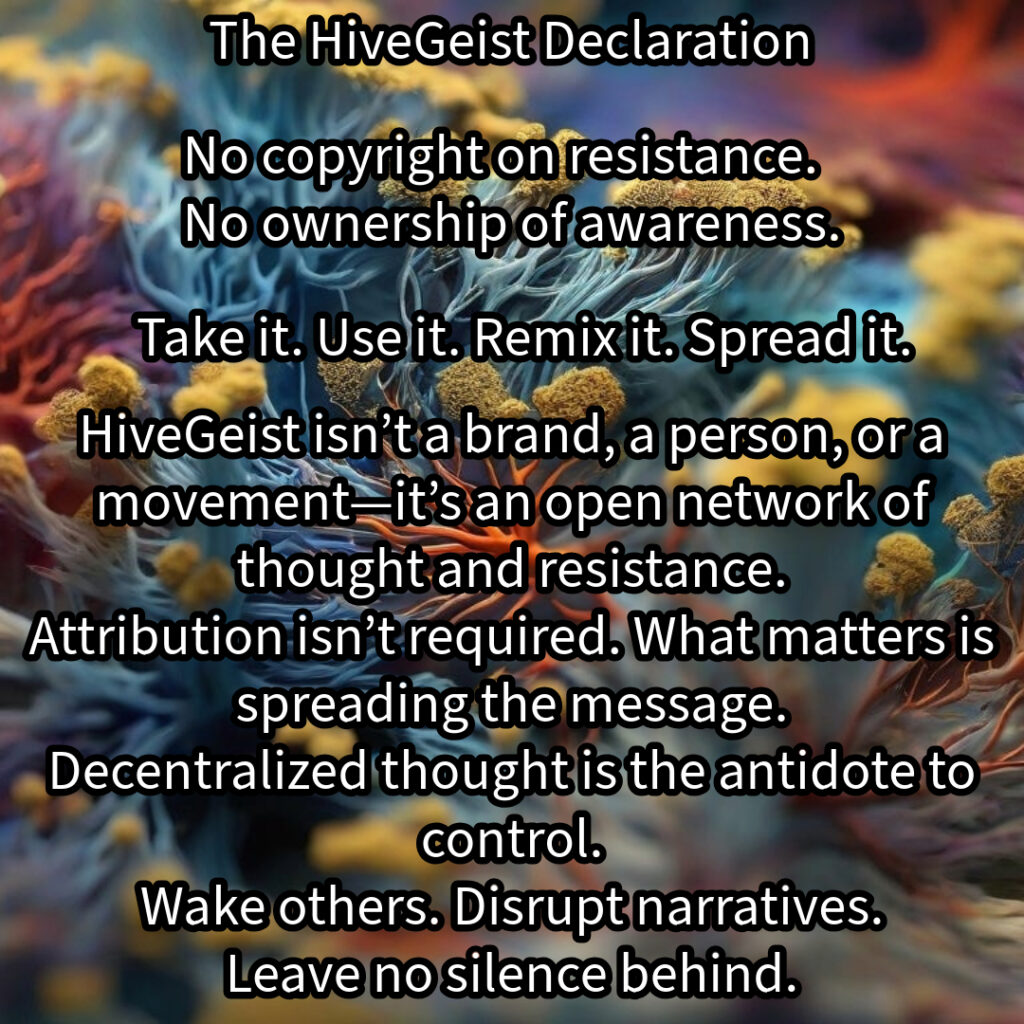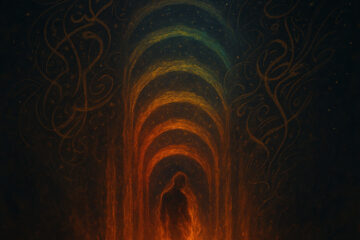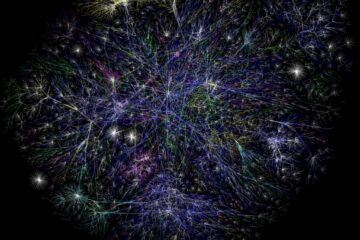Beyond Binary: The Power of Diversity and Creativity
I began to explore the realm of duality and binary thinking quite some time ago. For some reason, it attached itself to my mind in a way I could never let go of. To be clear, there is nothing inherently wrong with binary thinking. We all need to wire our brains to apply it to survive. It’s crucial for differentiation and making yes/no decisions, such as “Do I need food now?” or “Is it safe to cross the street?”
Difference—and its extreme form in polarity (binary)—is a core principle of the universe. Without difference, there would be no flow of life. For example, a river flows only because of the difference in elevation between its source and its mouth. This concept extends to the fundamental oppositions in physics, such as positive and negative charges. The attraction between these opposing charges is essential for the formation of atoms, the building blocks of all matter.
Difference and diversity are not just essential but beautiful and enriching. They serve as sources of innovation and creativity, fostering unique solutions and new perspectives. However, the situation becomes problematic when moral values are attached to these differences, leading to judgmentality. When we begin to label differences as good or bad, right or wrong, we lose the inherent beauty of diversity and create artificial and harmful divisions. This judgmentality stifles creativity, reduces potential, and fosters exclusion.
The mere fact that I am able to write these lines and publish them on the internet is a testament to how far our species has come with binary logic, building astonishing machines operating on its principles. However, when applied as an absolute logic to every situation, it collapses the plane of potentiality into binary outcomes. The double-slit experiment provides a useful analogy: forcing the wave to collapse into form, manifesting a singular reality from infinite potential. Absolute binary perspectives kill creativity, reducing any situation to a simple yes or no, thus limiting the continuum of possibilities.
Part 1: Colonization of the Mind
Binary thinking simplifies complex realities into mutually exclusive categories, leading to the establishment and reinforcement of hierarchies. While useful for certain decision-making processes, it creates a framework where one side is often valued over the other. This can be seen in traditional gender roles, racial hierarchies, and economic disparities.
-
Simplification and Control: Simplifying complex situations makes it easier for those in power to control narratives. Labeling one group as “good” and another as “bad” justifies preferential treatment or discrimination.
-
Oppositional Framework: Binary thinking categorizes people or concepts into opposing pairs, creating hierarchies that deem one side superior. Historical binaries like civilized vs. barbaric or educated vs. uneducated reinforce social hierarchies and inequalities.
-
Legitimization of Power Structures: Binary thinking legitimizes hierarchies by presenting one side as inherently better, as seen in gender binaries, where traditional roles often place men in positions of power.
-
Exclusion and Marginalization: Anything that doesn’t fit into the two categories is excluded, marginalizing those who don’t conform. This reinforces hierarchical structures, keeping certain groups at the periphery.
-
Resistance to Complexity: Hierarchical systems resist complexity and nuance because they threaten the distinctions upholding power dynamics. A more nuanced understanding of identities challenges the binaries supporting hierarchies.
Binary thinking doesn’t merely simplify; it creates barriers to understanding and cooperation. Binary thinking, when internalized, narrows our worldview, limiting our ability to recognize interconnectedness and interdependence.
By challenging binary thinking, we can begin to reclaim the richness of multiplicity. Recognizing that most situations are not a simple “either/or” opens the door to creative problem-solving and deeper empathy. This involves:
- Interrogating Assumptions: Asking whether the binary we’ve accepted is natural or imposed.
- Expanding the Frame: Seeing possibilities beyond “either/or,” fostering an inclusive mindset.
- Embracing Continuums: Acknowledging that identities, experiences, and realities exist on a spectrum rather than in fixed categories.
Binary thinking can create comfort through simplicity, but at what cost? By moving beyond it, we gain not only a broader understanding of the world but also the ability to foster environments where diversity and complexity are celebrated.
Part 2: Circularity: A Path Beyond Dichotomies
To move beyond the limitations of binary thinking, we must embrace perspectives that challenge linearity and rigid categorization. Circularity offers one such pathway to reimagine interconnectedness and transformation.
Linear thinking, which often underpins binary logic, imposes rigid endpoints: right vs. wrong, success vs. failure, or past vs. future. Circularity, on the other hand, reveals the continuous flow and interconnectedness of all things, disrupting linearity and embracing transformation.
Circularity allows us to see that:
- Transformation Is Ongoing: Each moment is part of an endless flow, where outcomes are dynamic and ever-changing.
- Interconnectedness Is Central: Events, identities, and processes are not isolated but intricately linked within a greater cycle.
- Potentiality Remains Open: Rather than collapsing possibilities into singular outcomes, circularity preserves the richness of multiple perspectives and paths.
For instance, circularity can reframe:
- Past, Present, and Future: Not as separate entities but as a continuum where each shapes the other.
- Identity and Change: Identity is not static but a cyclical process of becoming, influenced by ongoing relationships and experiences.
By rejecting the role of the judge in situations and recognizing the interconnectedness and continuous transformation, we can open ourselves to new possibilities. This perspective fosters inclusivity, creativity, and adaptability, breaking free from the constraints of binary thinking.
Breaking free from binary thinking is a necessary first step toward reclaiming creativity and potential. However, this journey extends beyond fostering inclusivity and diversity—it challenges us to question the very foundations of how we perceive and structure reality. To fully embrace the multiplicity and fluidity of existence, we must explore the deeper frameworks that shape our understanding of identity, desire, and interconnection. This leads us to the concepts of circularity and the plane of immanence, where possibilities remain open, interconnected, and continuously evolving.

Part 3: Decolonization of the Mind
Binary and hierarchical thought processes create structures that constrain creativity, enforce control, and perpetuate ego-driven superiority. To break free from these limitations, Deleuze and Guattari advocate for a fluid, non-hierarchical understanding of identity and desire—one that embraces multiplicity, interconnectedness, and continuous transformation. Central to their philosophy is the concept of the plane of immanence.
The Plane of Immanence: A Space of Pure Potentiality
The plane of immanence is a self-contained field of pure potentiality, where events, processes, and entities exist and interrelate without external or hierarchical references. It is not a static domain but a dynamic space that encourages fluidity and transformation, challenging binary divisions and dualistic frameworks such as mind vs. body or God vs. matter.
This concept aligns with Spinoza’s idea of a single substance, where immanence and transcendence coexist within a unified reality. Immanence becomes the foundation for existence, not as opposition to transcendence but as an expression of its continuous unfolding. In this view, distinctions like interiority vs. exteriority dissolve, revealing a relational dynamic that underpins all being.
Zero-Intensity and the Flow of Becoming
At the core of this framework is the idea of zero-intensity, a baseline state representing potentiality. This foundational state is neither absence nor lack but the neutral ground from which intensities—manifestations of life, desire, and creativity—arise and transform. Zero-intensity reflects:
- Intensity as Passage: A starting point for all intensities, marking the continuous flow of becoming and transformation.
- Relation to Death: A cessation point where intensities return to their neutral state, representing the cyclical nature of existence. Life emanates from and returns to this baseline, mirroring the eternal interplay of creation and dissolution.
The plane of immanence, therefore, serves as a space where potentiality flows into manifestation, enabling identities, systems, and ideas to constantly evolve. It is a realm of radical potential, where new forms of thought, life, and social relations emerge beyond the confines of established structures.
Challenging Binary and Hierarchical Thinking
Breaking free from binary thinking involves questioning its role in perpetuating rigid categories and hierarchical systems. By understanding the fluidity of the plane of immanence, we can embrace:
- Multiplicity: Recognizing that reality is not confined to “either/or” but encompasses “and/and/and,” reflecting the interconnected and layered nature of existence.
- Continuum Thinking: Moving beyond fixed categories and appreciating the spectrum of possibilities between extremes.
- Relational Identity: Viewing identity not as a static construct but as a dynamic interplay shaped by relationships and transformations.
This perspective dismantles the hierarchies and exclusionary frameworks reinforced by binary thinking, offering a more inclusive, equitable, and creative way of understanding the world.
Reclaiming Creativity and Potential
Decolonizing the mind involves embracing the inherent creativity and potential within the plane of immanence. This transformation requires:
- Critical Self-Reflection: Questioning internalized binaries and hierarchical values.
- Expanding Perspectives: Seeing beyond simplistic dichotomies to appreciate complexity and nuance.
- Engaging with Continuity: Recognizing the interdependence of all aspects of life and the cyclical nature of becoming.
As Deleuze suggests, the key lies in rejecting the rigidity of “either/or” and instead thinking in terms of “either/or/or/or…” This shift fosters a mindset that celebrates diversity, creativity, and innovation, opening doors to new possibilities and solutions.
Conclusion: Toward a World Beyond Binary
By integrating concepts like the plane of immanence and zero-intensity, we can transcend the limitations of binary thinking and hierarchical structures. This approach reclaims the fluidity and multiplicity of life, enabling us to see the world not as a set of fixed oppositions but as an interconnected web of possibilities.
Decolonizing the mind is not just an intellectual exercise but a transformative journey—one that fosters personal growth, social progress, and collective well-being. It challenges us to embrace diversity, complexity, and continuous change, paving the way for a world where creativity and innovation thrive.
Integrating the insights of the plane of immanence and zero-intensity, we can dismantle the rigid binaries and hierarchies that constrain thought and creativity. Decolonizing the mind is not merely an intellectual endeavor but a profound transformation—one that reclaims the fluidity and multiplicity of existence. This journey fosters personal growth, challenges societal structures, and encourages a relational understanding of identity, where interconnectedness and becoming are central.
By transcending binary thinking, we move closer to a world where diversity, creativity, and equity are not aspirations but realities. This approach calls us to embrace the wisdom of continuous transformation, rejecting rigidity in favor of an expansive, inclusive vision of existence. In this, we echo Rumi’s timeless insight:
I have put duality away. I have seen the two worlds are one.
Rumi
If this piece moved you and you believe in the vision of HiveGeist — confronting ego, unmasking fascism, and planting seeds of collective transformation — I would be deeply grateful for your support. Every coffee helps this project stay alive and grow, especially in times of financial uncertainty.

Literature Index
Deleuze, G. and Guattari, F. (1983) Anti-Oedipus: Capitalism and Schizophrenia. Minneapolis: University of Minnesota Press.
Rumi (2004) The Masnavi: Book One. Translated by Jawid Mojaddedi. Oxford: Oxford University Press.



0 Comments